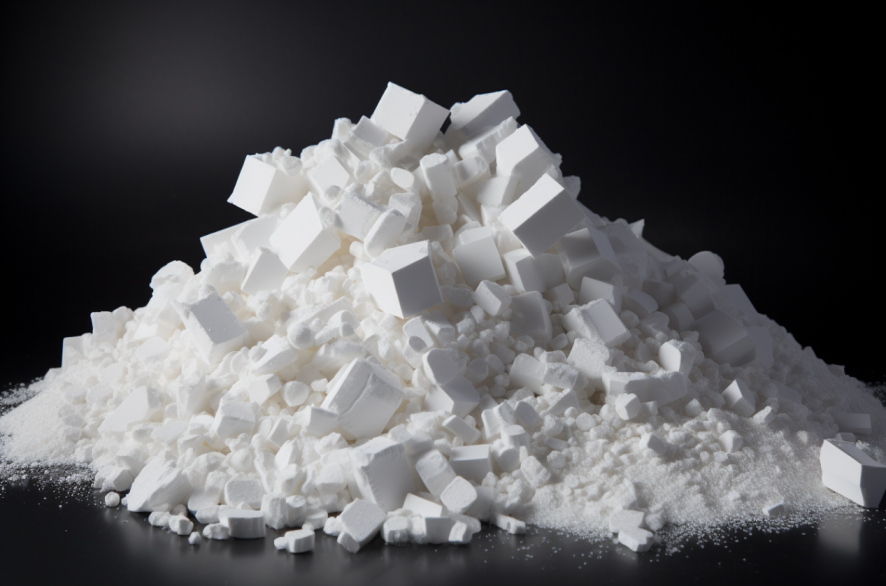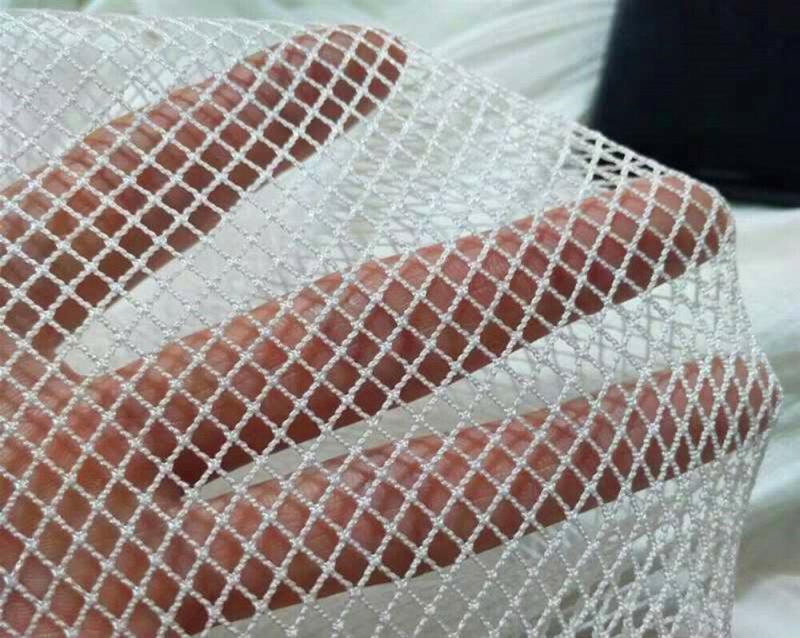Manufacturing Marvels: Insights into CPE135A PVC Impact Modifier
14/02/2024
CPE135A from CHEMBROAD is a versatile impact modifier that enhances the performance and versatility of PVC formulations across various industries. By following proper formulation guidelines, leveraging case studies and examples, considering environmental and regulatory considerations, and embracing future trends and innovations, manufacturers can unlock the full potential of CPE135A and drive continued growth and innovation in the PVC industry.
I. Introduction
A. Overview of PVC (Polyvinyl Chloride)
Polyvinyl Chloride, commonly known as PVC, is one of the most widely used polymers globally, prized for its versatility, durability, and cost-effectiveness. It finds applications in various industries, including construction, automotive, packaging, and healthcare.
B. Role of Impact Modifiers in PVC Formulations
While PVC exhibits many desirable properties, its inherent brittleness can limit its applicability in certain scenarios, especially where impact resistance is crucial. Impact modifiers are additives incorporated into PVC formulations to address this limitation, enhancing toughness and durability.
C. Introduction to CPE135A
Among the diverse range of impact modifiers available, Chlorinated Polyethylene (CPE) stands out for its exceptional performance in improving the impact strength and other key properties of PVC. CPE135A, manufactured by CHEMBROAD, is a widely utilized variant known for its effectiveness in enhancing PVC formulations.
II. Understanding CPE135A
A. Chemical Composition and Structure
CPE is a thermoplastic elastomer produced by chlorinating polyethylene. CPE135A is characterized by its chlorine content and molecular structure, which includes both crystalline and amorphous regions. This unique composition contributes to its remarkable properties.
B. Properties and Characteristics
CPE135A exhibits excellent impact resistance, weatherability, flexibility, heat stability, and processability. Its rubbery nature allows it to impart toughness to PVC without sacrificing other desirable properties.
C. Production Methods
CHEMBROAD utilizes advanced manufacturing processes to produce high-quality CPE135A. These methods ensure consistency, purity, and reliability, meeting the stringent requirements of various industries.

III. Benefits of CPE135A in PVC Formulations
A. Improved Impact Strength
The primary benefit of incorporating CPE135A into PVC formulations is the significant enhancement of impact strength. This improvement is crucial for applications where resistance to impact and mechanical stress is paramount, such as pipes, fittings, and profiles.
B. Enhanced Weatherability
CPE135A contributes to the weatherability of PVC products, ensuring they withstand prolonged exposure to harsh environmental conditions, including UV radiation, moisture, and temperature fluctuations. This property makes it suitable for outdoor applications like window profiles and roofing materials.
C. Increased Flexibility
By imparting flexibility to PVC, CPE135A expands the range of applications for this versatile polymer. Flexible PVC products, such as cables, hoses, and medical devices, benefit from the enhanced flexibility and resilience provided by CPE135A.
D. Heat Stability
CPE135A improves the heat stability of PVC formulations, enabling them to withstand elevated temperatures without significant degradation. This property is particularly advantageous in applications where thermal resistance is essential, such as automotive components and electrical insulation.
E. Processability Improvement
In addition to enhancing the performance of PVC products, CPE135A improves their processability during manufacturing. It facilitates efficient processing techniques, including extrusion, injection molding, and calendaring, resulting in higher productivity and cost savings.
IV. Applications of CPE135A in Various Industries
A. Building and Construction
CPE135A finds extensive use in the building and construction industry for manufacturing a wide range of PVC products, including pipes, fittings, window profiles, and siding. Its ability to improve impact resistance, weatherability, and processability makes it indispensable in this sector.
B. Automotive
In the automotive industry, CPE135A is utilized in the production of various PVC components, such as interior trim, weather seals, and under-the-hood applications. Its excellent impact resistance and heat stability meet the demanding requirements of automotive engineering.
C. Electrical
CPE135A plays a vital role in the electrical sector, where PVC is used for insulation and jacketing in cables and wires. Its superior flexibility, heat resistance, and processability ensure the reliability and safety of electrical installations.
D. Packaging
In the packaging industry, CPE135A enhances the performance of PVC films and containers, improving their impact resistance and durability. This makes PVC packaging suitable for a wide range of products, including food, pharmaceuticals, and consumer goods.
V. Formulation Guidelines
A. Proper Dosage Levels
Determining the appropriate dosage of CPE135A in PVC formulations is crucial for achieving optimal performance. Manufacturers typically conduct extensive testing to identify the ideal dosage levels based on the specific application requirements and desired properties. The dosage can vary depending on factors such as the type of PVC resin used, the intended application, and the desired level of impact resistance.
B. Compatibility Considerations
Compatibility between CPE135A and other additives in the PVC formulation is essential to ensure uniform dispersion and effective impact modification. Compatibility testing is conducted to assess the interaction between CPE135A and various additives such as plasticizers, stabilizers, and fillers. Proper formulation adjustments may be necessary to achieve the desired balance of properties.
C. Processing Conditions
Optimizing processing conditions is crucial to maximizing the performance of PVC formulations containing CPE135A. Factors such as temperature, pressure, and residence time during processing can influence the dispersion of CPE135A and the overall properties of the final product. Manufacturers must carefully control processing parameters to ensure consistent results and minimize processing challenges.
D. Synergistic Effects with Other Additives
CPE135A may exhibit synergistic effects when combined with other additives in PVC formulations. For example, it may enhance the effectiveness of impact modifiers or improve the compatibility of incompatible additives. Understanding the synergistic interactions between CPE135A and other additives can help optimize formulation performance and achieve desired property enhancements.
VI. Case Studies and Examples
A. Impact Modification in PVC Pipes
PVC pipes require high impact resistance to withstand external forces and ensure long-term durability. By incorporating CPE135A into PVC pipe formulations, manufacturers can significantly improve impact strength without compromising other properties. This allows PVC pipes to withstand harsh installation conditions and environmental stresses, extending their service life and reducing maintenance costs.
B. CPE135A in Vinyl Siding Production
Vinyl siding is a popular choice for exterior cladding due to its durability, low maintenance requirements, and aesthetic appeal. CPE135A plays a critical role in enhancing the impact resistance of vinyl siding, protecting it from damage caused by hail, wind-blown debris, and other impacts. As a result, vinyl siding reinforced with CPE135A maintains its appearance and performance over time, providing long-lasting protection for residential and commercial buildings.
C. Automotive Applications: Dashboards, Trims, etc.
In the automotive industry, CPE135A is used in various interior and exterior components to improve impact resistance and durability. Dashboards, door panels, trim pieces, and bumper covers reinforced with CPE135A withstand daily wear and tear, ensuring a longer lifespan and enhanced safety for vehicle occupants. Additionally, CPE135A enhances the weatherability and thermal stability of automotive components, making them suitable for use in diverse environmental conditions.
VII. Environmental and Regulatory Considerations
A. Compliance with Regulations (e.g., REACH, RoHS)
Manufacturers of CPE135A must ensure compliance with relevant regulations and standards, such as the Registration, Evaluation, Authorization, and Restriction of Chemicals (REACH) and the Restriction of Hazardous Substances (RoHS) directives. Compliance demonstrates a commitment to environmental responsibility and product safety, providing assurance to customers and regulatory authorities.
B. Sustainability Aspects
As sustainability becomes increasingly important in the plastics industry, manufacturers are exploring ways to minimize environmental impact throughout the product lifecycle. This includes using renewable feedstocks, reducing energy consumption, optimizing production processes, and promoting recycling and reuse initiatives. By adopting sustainable practices, manufacturers of CPE135A can contribute to a more environmentally friendly and socially responsible industry.
VIII. Future Trends and Innovations
A. Research and Development Efforts
Ongoing research and development efforts aim to further enhance the performance and sustainability of CPE135A and its applications in PVC formulations. This includes exploring new chemical formulations, improving processing techniques, and investigating novel applications in emerging industries.
B. Emerging Applications
Advancements in technology and material science are opening up new opportunities for the use of CPE135A in diverse applications. From 3D printing filaments to advanced composites, CPE135A offers unique properties that meet the evolving needs of modern industries, driving innovation and market growth.
C. Advancements in Production Techniques
Continuous advancements in production techniques are improving the efficiency, quality, and sustainability of CPE135A manufacturing processes. From catalyst design to reaction engineering, manufacturers are investing in innovations that reduce energy consumption, minimize waste generation, and enhance product consistency, ensuring a reliable supply of high-quality CPE135A for the global market.
Conclusion
CPE135A from CHEMBROAD is a highly effective impact modifier that enhances the performance of PVC formulations across various industries. Its exceptional properties and versatility make it an essential additive for improving impact resistance, weatherability, flexibility, heat stability, and processability. Whether in building and construction, automotive, electrical, or packaging applications, CPE135A plays a crucial role in enhancing the durability, reliability, and functionality of PVC products.




